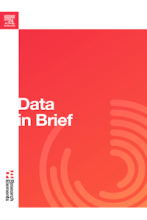The objective of this project was to produce the empirical foundations for a new analysis of the debates around the public vs. private provision of coastal lighting. All previous studies relied on only a handful of case studies to reach very general conclusions on the role of government in the provision of public goods, but new historical data on English and Welsh lighthouses has recently been created by Dunn, Alvarez and Shaw-Taylor (2020 and 2021) and now on French lighthouses by Litvine, Dunn and Shaw-Taylor (2021) both with the support of the Keynes Fund.
It is frequently assumed that nationalisation in 1836 led to a better service and lower taxes paid by ship owners (in light dues) but no one has been able to test the hypothesis. In order to offer a more rigorous and empirical conclusion to this debate it was necessary to create comparable geo-historical datasets that will make the analysis of network efficiency and the comparison of public vs. private provision possible. This is what this project did.
Coastal lighting has become a test case in the public goods literature. Using historical examples, Coase (1974) famously challenged the popular idea that lighthouses were non-excludable and non-rivalrous goods that only the state could provide. For J.S. Mill (1848), Sidgwick (1883), Pigou (1920) and Samuelson (1964), sea lighting could never be left to the market due to a peculiar free-rider problem: passing ships could not be forced to pay for the service when sailing miles out at sea. Government intervention was required to enforce user fees. Coase, however, claimed that all lighthouses in England were private and profit-making before their partial nationalisation in 1836 and operated without major government interventions, which we now know to be mistaken.
Following Coase (1974) much of the focus has been on the performance of private lighthouse providers and comparisons with what became the largest provider, Trinity House (e.g., Taylor 2001, Bertrand 2006). Van Zandt (1993) argued that private actors could provide public goods but only because the state ensured tolls were paid in port, making light provision a public-private system. Bertrand (2006) showed that all early systems in Europe combined private and public provision, and that Coase’s argument relied on an oversimplification of historical reality. Candela and Geloso (2017, 2018) added that including lightships into the broader lighthouse market implies not market failure, but government failure to allow private lighting services to flourish.
Coase’s arguments have generated a wide-ranging debate, extending to many countries, including the US (Mixon and Shaw Bridges 2018), Hong Kong (Lai 2008), Sweden (Lindberg 2013). Callais and Geloso (2020) recently added to the debate, with the finding that political considerations played a strong role in selecting where lighthouses would be built in the USA. Saito’s (2019) study of Japanese sea lighting shows private individuals in local harbours provided lights before nationalization in the 19th century. The consensus is that before the mid-19th century, private provision was normal (with state support).
Yet, despite this extensive literature on the efficiency of lighthouse provision, no one has yet has not done any rigorous cost-benefit analysis of the different models of provision looking at the entire networks (pre- vs. post-nationalisation, England and Wales’ very early development vs. Scotland’s and Ireland’s later lighthouse building, and Britain’s largely free-market driven model vs. France’s publicly funded model). In order to offer a more exhaustive and conclusive assessment of market failure in the provision of coastal lighting provision we created a series of new data:
- to provide a cost-benefit analysis of the efficiency of the lighting network in England and Wales
- to compare the efficiency of the spatial distribution of lights in the French (centralised and planed) vs. the British (market-driven) systems by measuring them against an optimal extension/location model.
- to estimate the induced productivity gains for the shipping industry based on extended dark-hour navigation, reduced frequency of wrecks/accidents along the coast
- to measure the comparative benefits to society of state vs. private provision of lighting by comparing the cost borne by shippers vs. the cost borne by the taxpayer and the resulting effects on safety at sea.
ANIMATION 2: Combined networks for England and Wales, Scotland and France
Dataset for French historical light aids to navigation (F-Lan) covering the period 1775-1929
Dataset for French historical light aids to navigation (F-Lan) covering the period 1775-1929, Alexis D. Litvine, Oliver Dunn, Data in Brief, 36 (2021).
F-LAN is a geospatial data set that documents hundreds of coastal lights that guided ships around France from medieval times to 1929. F-LAN provides visibility range for individual lights. The authors collected all data from scholarly literature, historical coastal navigational charts, and official lighthouse surveys. F-LAN allows users to track the provision of coastal lighting over time. It complements the existing LAN dataset for England and Wales. Thanks to F-LAN it is now possible to map and analyse light coverage for France over two centuries. It can be used to analyse coastal routing, infrastructure investment and the relationship between accidents and the provision of light in any given area.
Published datasets
- Litvine, Alexis D. and Dunn, Oliver (2021). French Historical Light Aids to Navigation (F-LAN), 1775-1929. [Data Collection]. Colchester, Essex: UK Data Service. 10.5255/UKDA-SN-854607 Downloaded 16 times as at: 7/6/2023.
Unpublished datasets
- New data on gross light dues revenues by owner in England and Wales for 1680-1911
- A new geospatial dataset for all Scottish lights (1911) containing 436 lighthouse observations covering the full Scottish coastline, containing georeferencing points and visibility range.
- A new dataset documenting 7,455 journey times (i.e., departure day from port A to arrival day at port B) between 130 port-pairs England and Wales 1651-1683; for 1830-1845, 2,591 comparable journey times between 1,815 port-pairs England and Wales. We had originally expected to produce only 3,100 journey times but were able to produce twice this amount by developing a new, more efficient, methodology to extract this information.
- A new dataset geolocating all documented wrecks and accidents between 1854-1911 around the British Isles, 60,000 observations.
- A new dataset documenting moon phases for any night since 1500.
- A new experimental methodology to create real-world coastal routing models by using both available light provision and environmental variables. We have collaborated with the EU Copernicus programme (EU environmental data collection agency) and the SHOM (the French National Hydrographic Service) to establish our methodology for the new routing engine and access the most detailed modelling of wind, waves, currents, and visibility data. This is work in progress, but will make a significant difference, when completed, to the analysis of the contribution of light provision to safety at sea, and productivity of the shipping industry. The first stage of this work involved creating a new code to produce real-life visibility (improving on simplified geometric visibility we used before) based on a combined Digital Elevation Model (DEM) and bathymetric model of European coastal areas. The code will be available on Github, as part of the Nature submission detailed below.
Publications
- Litvine, A.D., Dunn, O., ‘Dataset for French historical light aids to navigation (F-Lan) covering the period 1775-1929’, Data in Brief, 36 (2021). Link to article. Link to article




